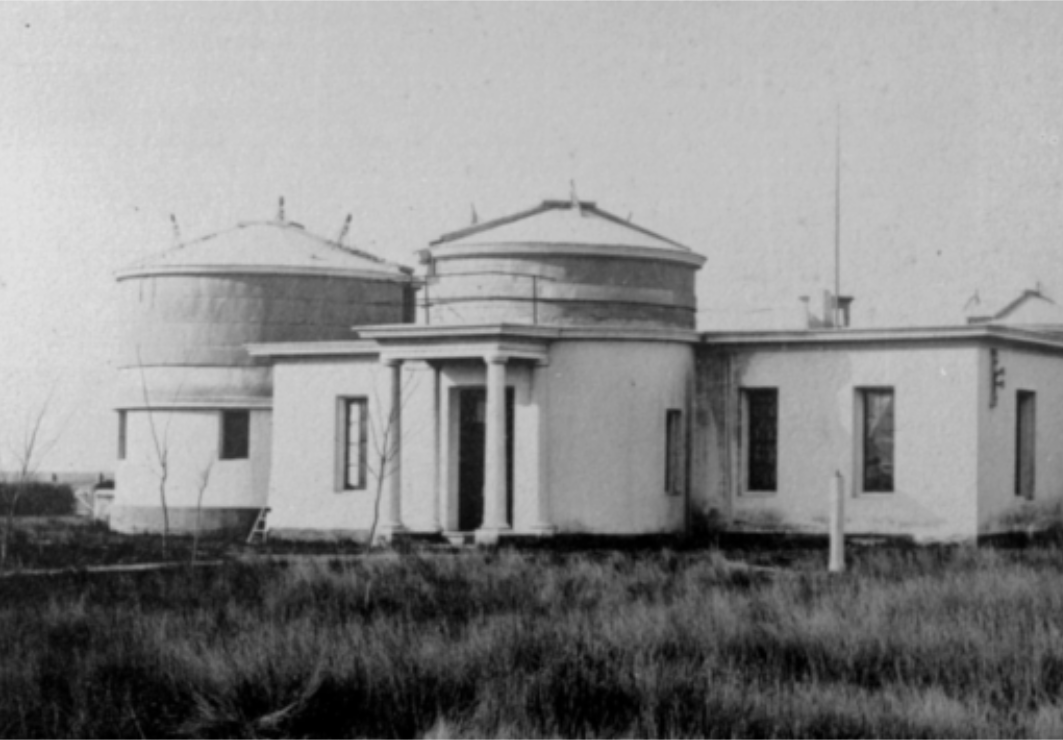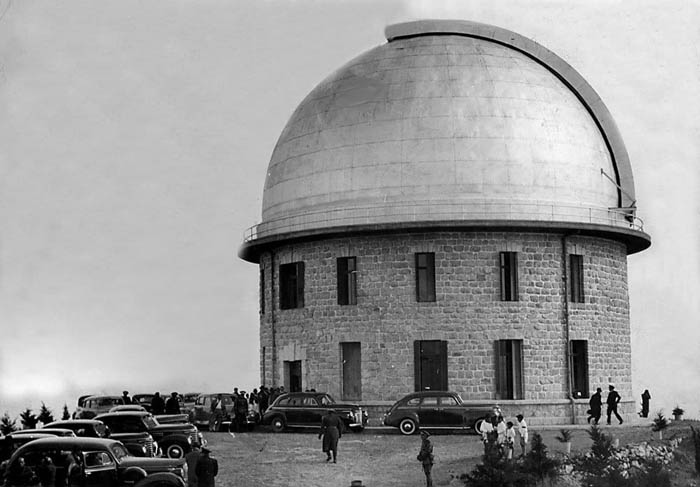Anniversary of the Observatorio Astronómico de Córdoba
The inauguration of the Observatorio Nacional Argentino (ONA) in the city of Córdoba on 24 October 1871 marked the establishment of professional astronomy in the Argentine Republic. The institution was the result of the visionary idea of President Domingo F. Sarmiento and his Minister Nicolás Avellaneda, who hired Dr. Benjamin Gould as founding director.
Observations began with the Uranometría Argentina, a work in which the positions of stars visible to the naked eye were recorded. During the first directorship, which lasted almost 15 years, two large catalogues were produced with the positions of tens of thousands of stars, obtained with the meridian circle. In addition, in a pioneering work, dozens of southern star clusters were photographed.

View of the ONA, 1871.
At the same time, tasks were carried out that contributed significantly to national development: the systematisation of standards of weights and measures, the broadcasting of the official time, the determination of geographical positions and the creation of the Argentinian Meteorological Office.
After Gould’s resignation, John Thome became the new director. His term of office included the Cordoba Durchmusterung, a catalogue of more than 600,000 stars, as well as the start of work on the international photographic project Carte du Ciel.
In 1909 the astronomer Charles Perrine was appointed director, who oriented the research towards astrophysics. During this period, the Bosque Alegre Astrophysical Station (EABA) was planned, and the acquisition of the 1.5 metre reflector, the donation of the land where it would be installed and the construction of the dome for the instrument were achieved.

Photography taken in Córdoba, 1876.
The impossibility of finishing the sculpture of the mirror prevented Perrine from seeing the project through to completion before his retirement. The project was completed during the administration of Enrique Gaviola. The telescope saw its first light in July 1942, an event that marked the beginning of a new era. Since then, the research carried out with this instrument has had great repercussions in astronomy, such as Dr. José Luis Sersic’s Catalogue of Southern Galaxies.
In 1954, the Observatory became part of the National University of Córdoba, and in 1957 the Institute of Mathematics, Astronomy and Physics was created; predecessor of the current Faculty of Mathematics, Astronomy, Physics and Computing.
From that moment on, a long list of professionals emerged from it, who gave continuity to the achievements of the Observatorio Astronómico de Córdoba (OAC), a precursor institution of national science.

EABA in its inauguration, 1942.
Texto: Mgtr. Ing. Santiago Paolantonio
Para más información visitar: